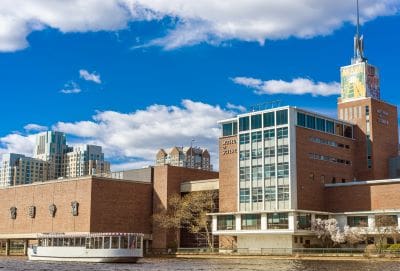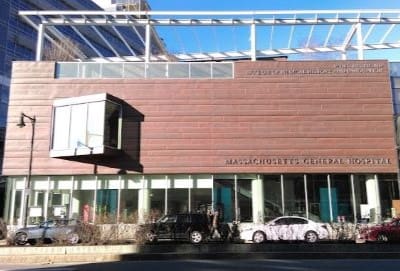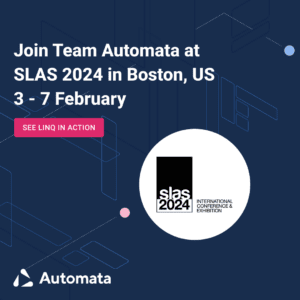Trade shows are dynamic hubs where industries converge to showcase innovation, establish connections, and pave the way for future collaborations.
The Society for Laboratory Automation and Screening International Conference and Exhibition (SLAS) shows (Europe and US) are always a highlight, and we had a great time in Boston for #SLAS24 this February.
We consider ourselves SLAS show veterans, and, as Boston is the home of our office across the pond, we thought it’d be helpful to share our top tips for getting the most out of visiting conferences and exhibitions in the Boston area.
1) Check the schedule
This may sound like an obvious one, but even seasoned conference attendees have found themselves missing speakers due to losing track of time, looking at schedules for the wrong day, or because they haven’t planned anything beyond just getting there.
Creating a plan for your time at the show in advance will also give you an opportunity to book networking and breaks and is especially useful if a vendor you want to connect with has pre-bookable meeting slots.
2) Be a science tourist
Boston is great for tourists and business visitors and offers a variety of attractions and experiences depending on what you’re looking for.
To keep this on-theme, you could take the opportunity to check out some of the more scientifically inspirational museums to reconnect with the history of our field. Some of our favourites are below and on this handy Google Map of local life science companies, shared facilities, and attractions.
3) Attend presentations and talks
It’s tempting to spend the day checking out potential suppliers and competitors, and catching up with your colleagues and contacts. However, there are usually excellent talks being delivered on the show floor, and training or pre-show activities happening in the days leading up to or after large events.
#SLAS24 had nine scientific tracks, each chaired by experts from some of the leading biotechs in the world, such as GSK, AstraZeneca and Tetra Science.
- Advances in Bioanalytics and Biomarkers
- Assay Development and Screening
- Automation Technologies
- Cellular Technologies
- Data Science and AI
- Micro- and Nano Technologies
- New Modalities
- Omics
- Precision Medicine & Diagnostics
Even when these sessions are at an extra cost, it might be a time-effective way to boost your professional development if something looks useful.
4) Investigate competitors, suppliers and customers
More than 21m sq feet of lab space has been added to Massachusettes in the last decade, and as a result, Boston is a national leader in scientific research, medicine and engineering. The Milken Institute rates it as the top life sciences cluster in the country and a biotechnology hub, so you could do far worse than leveraging your network to access some of these inspirational facilities and high-value businesses. Some, especially science park property agents, also offer public tours of their facilities.
A list of lab spaces offered by accelerators and incubators can be found here or on this handy Google Map of local life science companies, shared facilities, and attractions.
Boston Waterfront Innovation District, more commonly known as the Seaport District, is where the Conventre Centre is located, and it’s home to a number of biotechs, including LG Chem Life Sciences, healthcare giant Roviant and chemoproteomics experts Jnana Therapeutics to name a few, so you don’t have to go far to find inspiration from market leaders.
5) Make a post-event action list – on the day
As soon as you put that leaflet in your show bag, you risk doing nothing with it. How often have you returned to the office, only to never think about half of the people you met at a conference again?
It’s much more effective to spend some time over a coffee or lunch break looking at the materials you’ve picked up and noting any interesting companies, contacts, and speakers you’ve seen at the show.
You’ll remember more on the day, save you time when you get back to the office, and, more importantly, help you form a post-show action plan.
Most vendors and attendees know that shows like SLAS are conversation starters, not closers, so a solid post-show comms plan is the best way to ensure you maximise the opportunities you open up on the show floor.
We can’t wait to showcase LINQ again in October at Future Labs Live, PA, and we’re looking forward to meeting as many of you as possible.
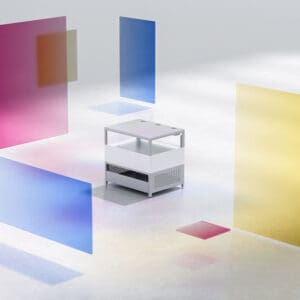
Automata launches the LINQ platform to fully automate workflows and the transport…
Read more Automata launches the LINQ platform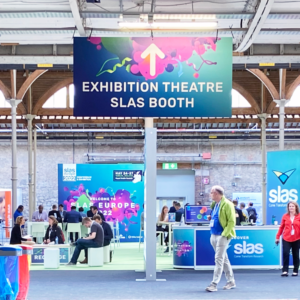
Our round up of the latest innovations and trends in the lab…
Read more SLAS Europe 2022: five key trends in lab automation